
Key Points
- Equal Weight vs. Cap Weight S&P 500 is at a Key Level
- NYSE Advance-Decline Volume is Breaking to New Highs
- Lack of New Lows is a Bullish Datapoint
- S&P 500 Breadth Remains “Bent, Not Broken”
- Short-Term Metrics Need to Improve Further
Chart in Focus:
The S&P 500 Equal Weight Index is at an inflection point relative to the S&P 500 (Cap Weighted). The ratio is fading from the resistance level that we have been highlighting, but the rising 50-day moving average is just below. The moving average has been an important support level for this theme. Much of the “risk-on” behavior that we have seen, since last summer, has coincided with this ratio moving higher. A failure to hold the moving average could be a sign of a more risk averse stance in the equity market.
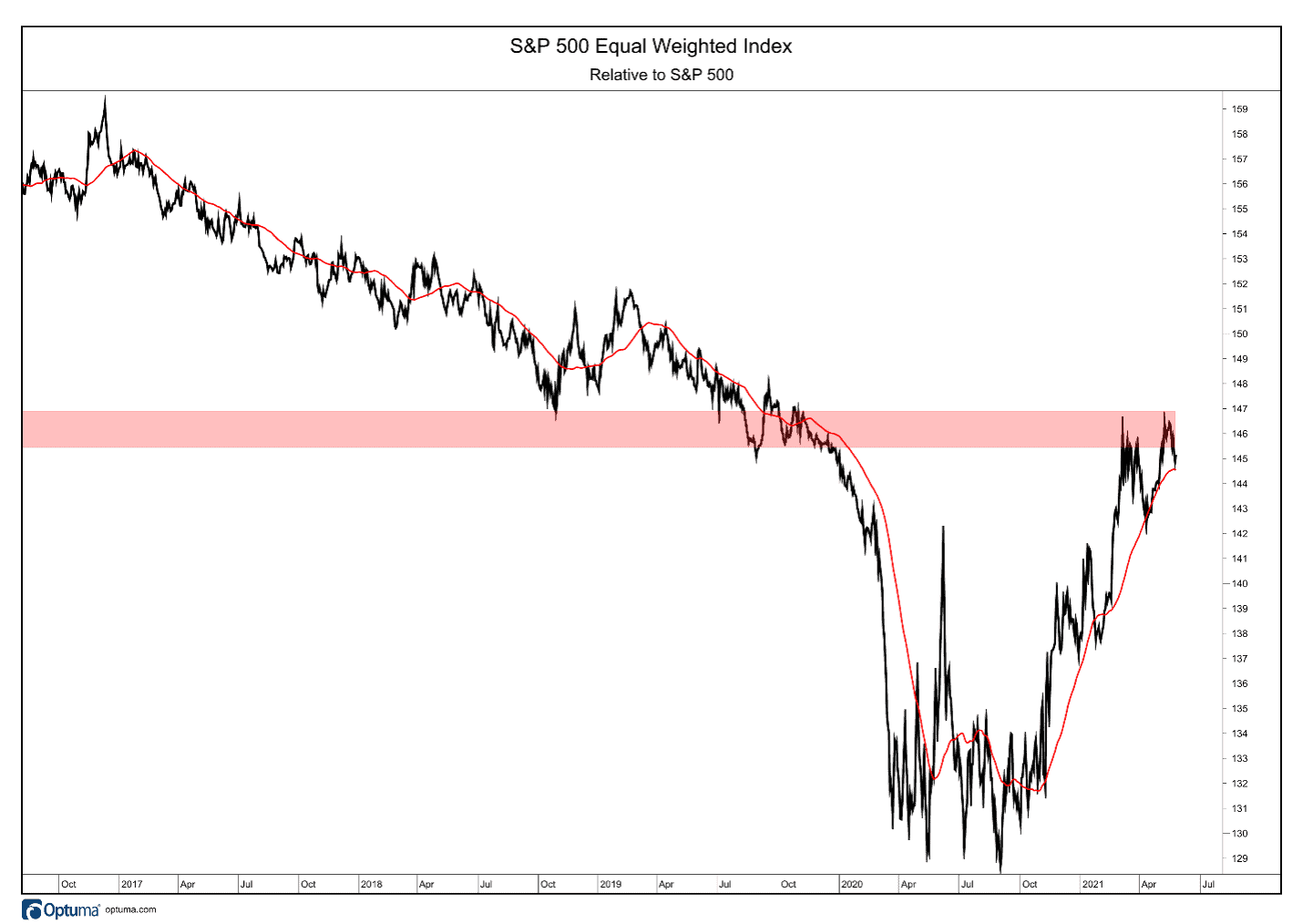
NYSE Breadth
The Advance/Decline Line for the NYSE is in a steady uptrend above the rising 50-day moving average, tracking the path of the S&P 500. Importantly, the A/D Line is on the verge of trading to a new high. Should a new high be reached, we would expect the index to follow closely behind.
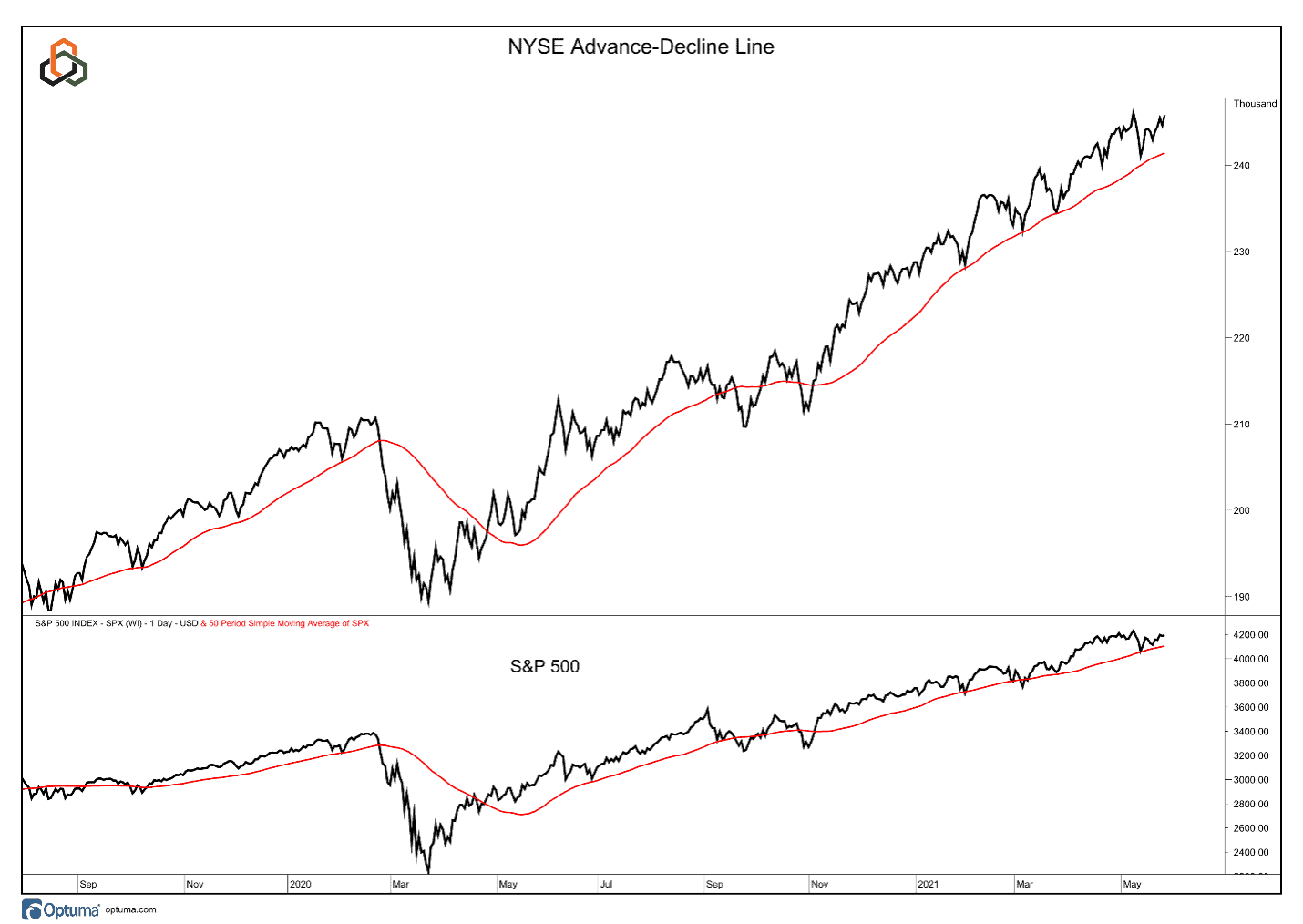
Adding volume to the equation, we can see that the NYSE Advancing – Declining Volume Line is in the process of breaking to a new high, ahead of the S&P 500. The 50-day moving average has done a good job of providing support for the indicator and the index.
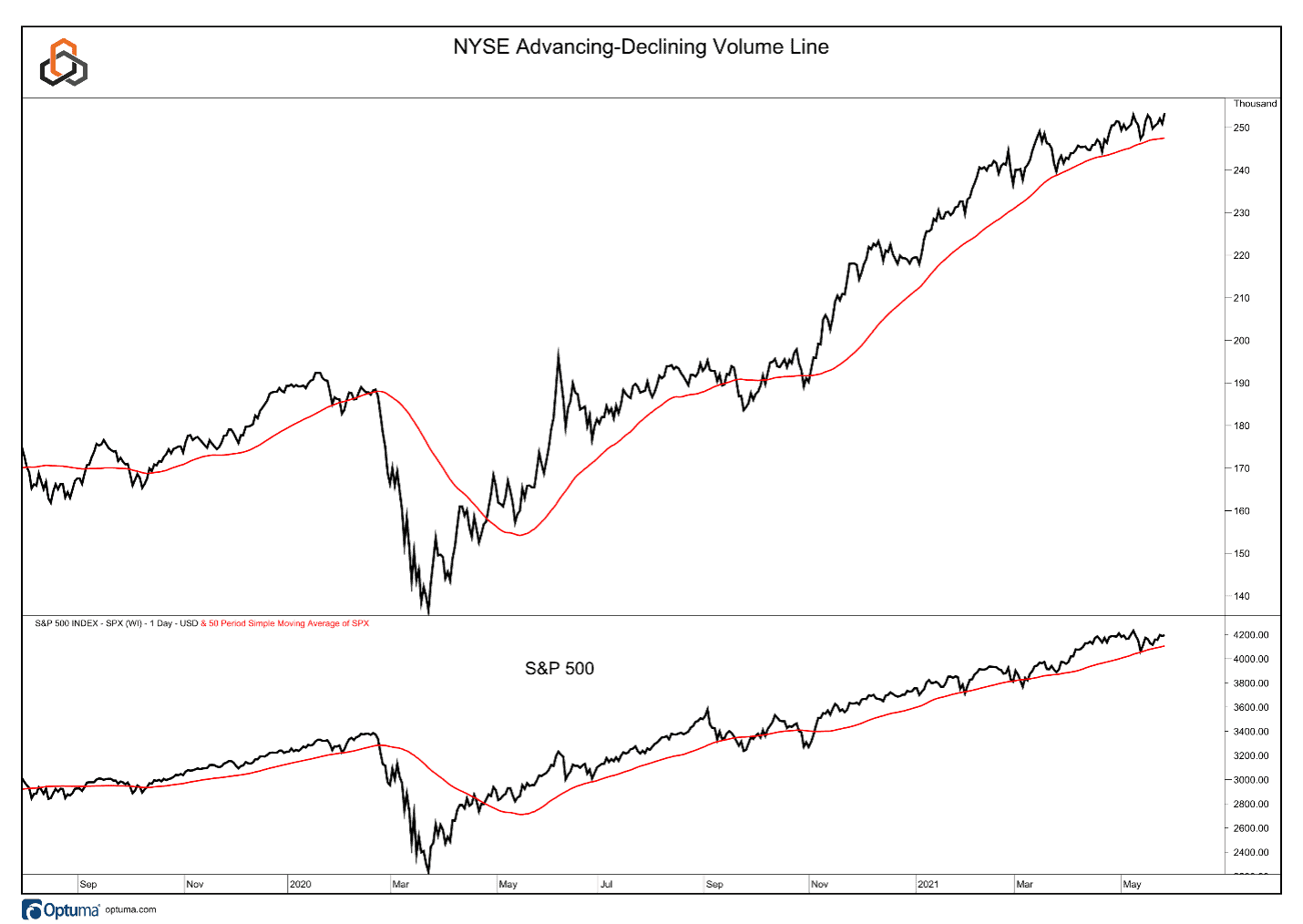
Importantly, for our work, we have not seen a sustained buildup of new lows on the NYSE. The percentage of issues on the NYSE making new 52-week lows and the percentage making new six-month lows remain close to the zero level.
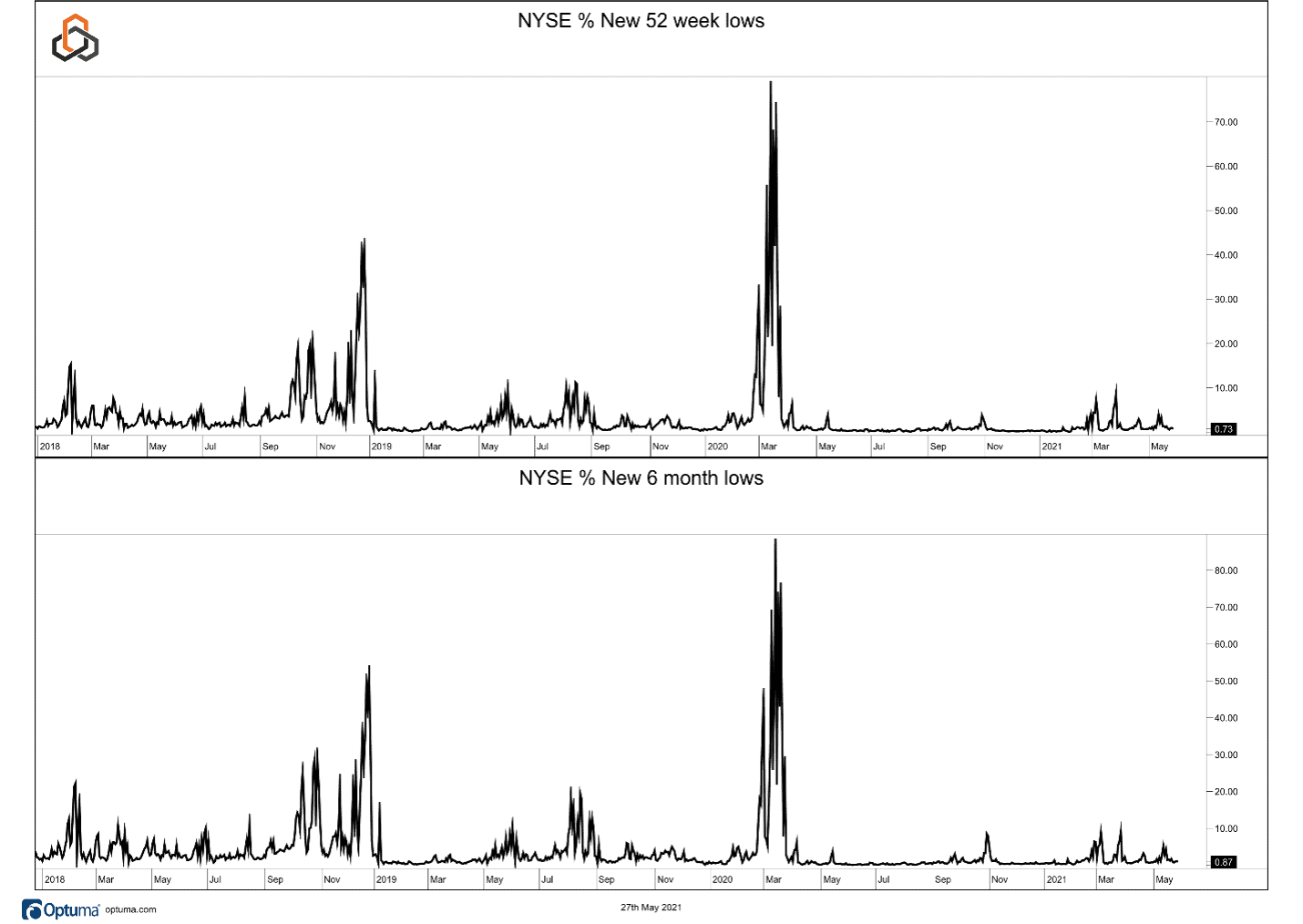
The percentage of issues on the NYSE that are trading above their respective 200-day moving averages has been declining since the start of the year but remains above the 60% level. This level points to the fact that a healthy majority of issues are in long-term uptrends. Additionally, this metric appears to be finding support at the 2020 highs.
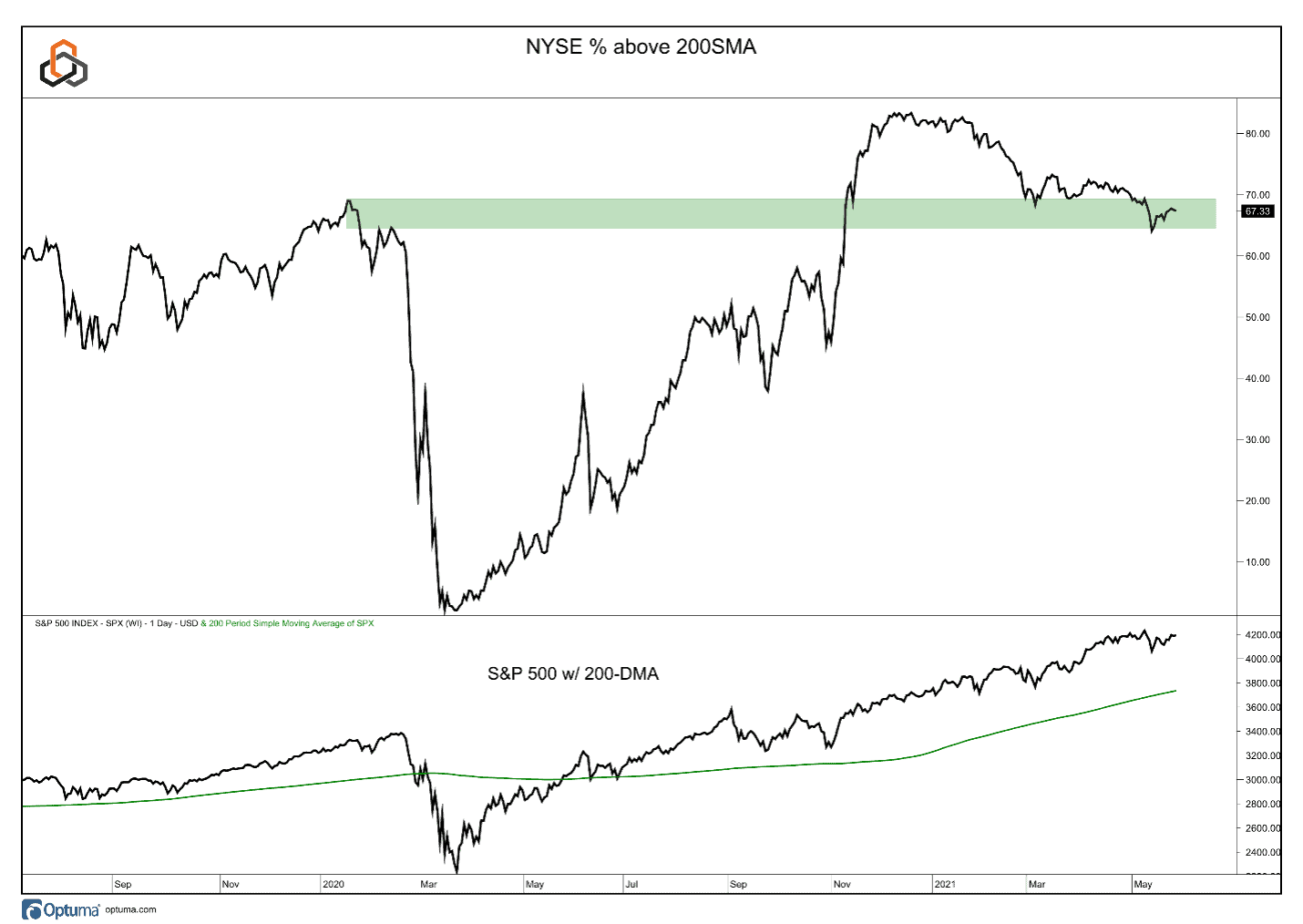
The percentage of issues on the NYSE which are trading above their respective 50-day moving averages has regained the 50% mark after a brief trip below. Thus far, the series of lower highs since late 2020 has not had a bearish influence on the S&P 500, which has continued to find support at its rising 50-day moving average.
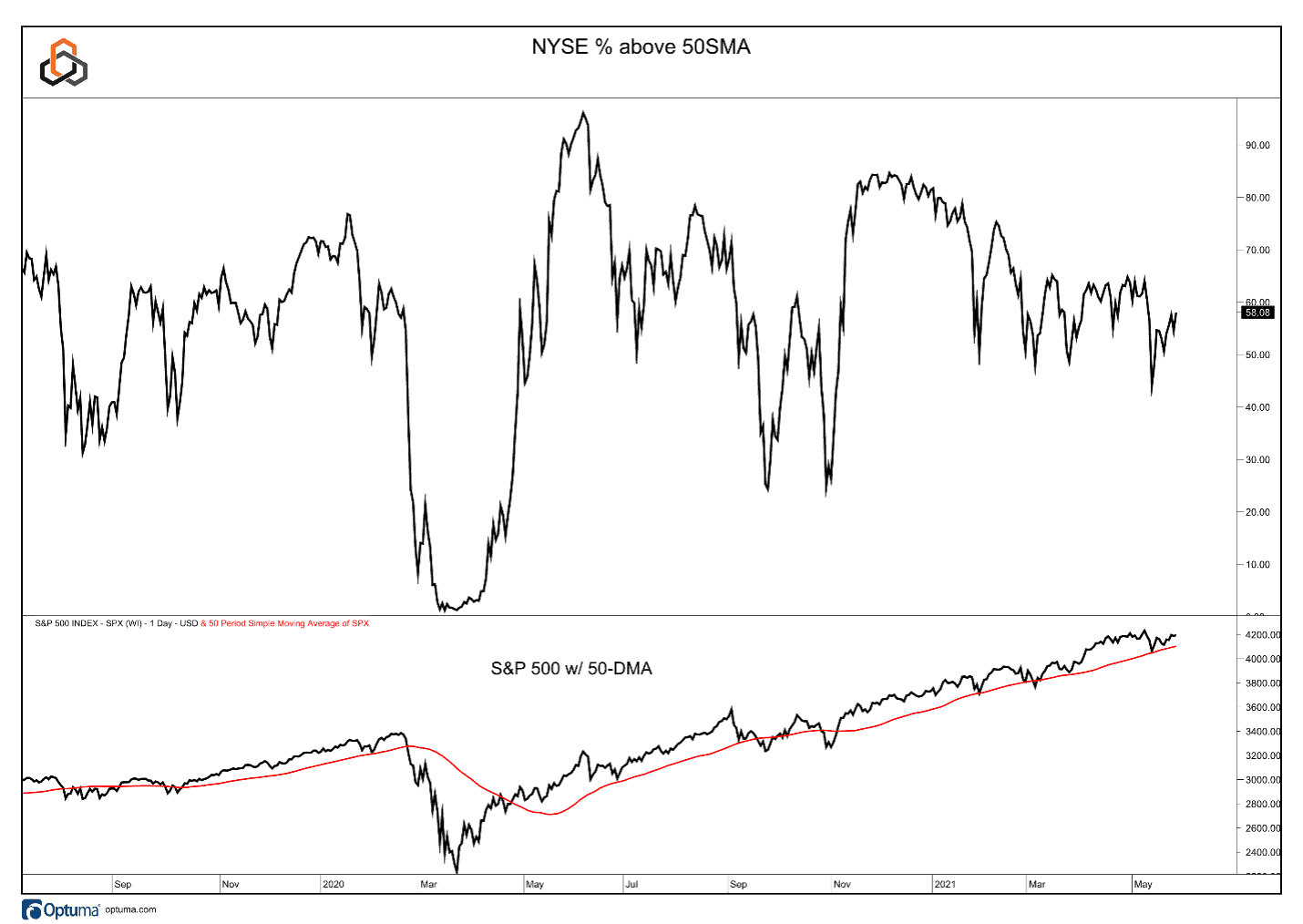
The percentage of issues on the NYSE which are trading above their respective 20-day moving averages is rebounding in the near-term. At the same time, the S&P 500 has regained its own 20-day moving average, which has shifted from rising to flat. The indicator has made a series of lower highs since last November, a trend that bullish investors would like to see broken in the near-term.
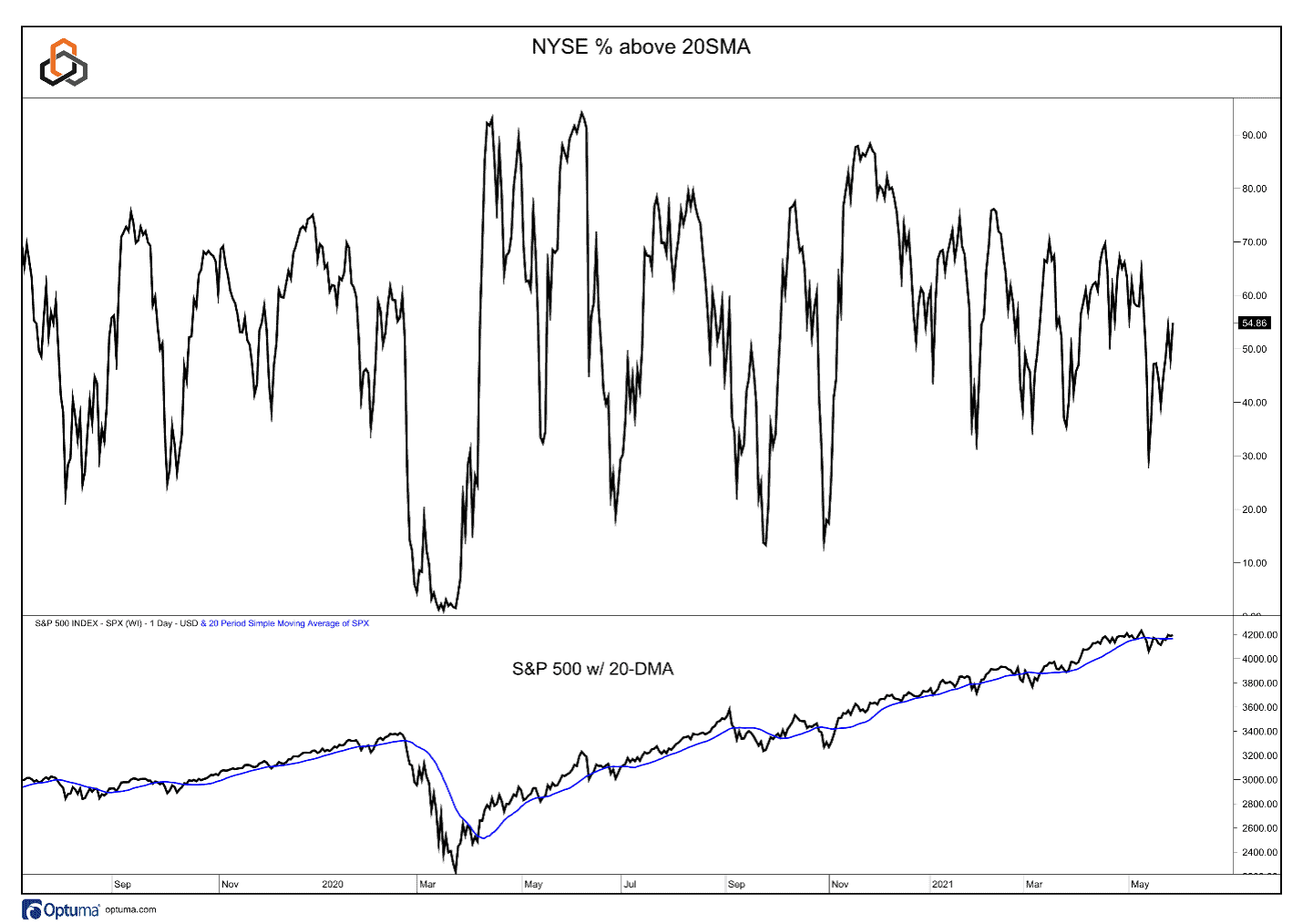
S&P 500 Breadth
Breadth within the S&P 500 remains constructive, as we have been highlighting for the past few weeks. The A/D Line continues to trend higher, above the 50-day moving average, while the percentage of stocks in long-term uptrends (above their own 200-day moving averages) has regained the 90% level. The intermediate-term trends are healthy, with more than 70% of stocks above their 50-day moving averages. The short-term has faded a bit, with the percentage of stocks above their 20-day moving averages below the 60% level.
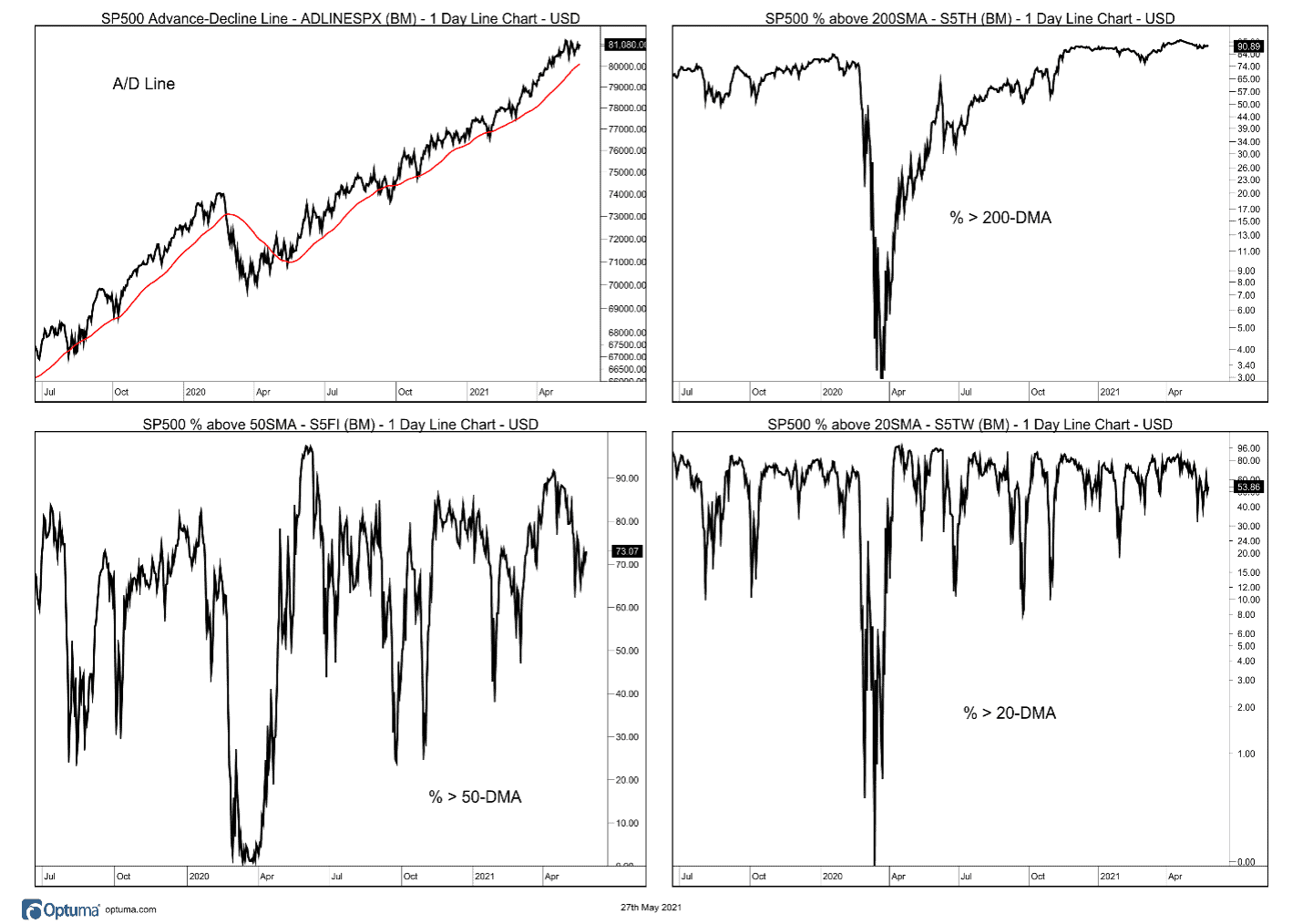
S&P 600 Breadth
Within the S&P 600, the Advance/Decline Line is holding up under pressure, remaining above the 50-day moving average. Across timeframes, the short and intermediate-term metrics are neutral while the long-term metric remains strong.
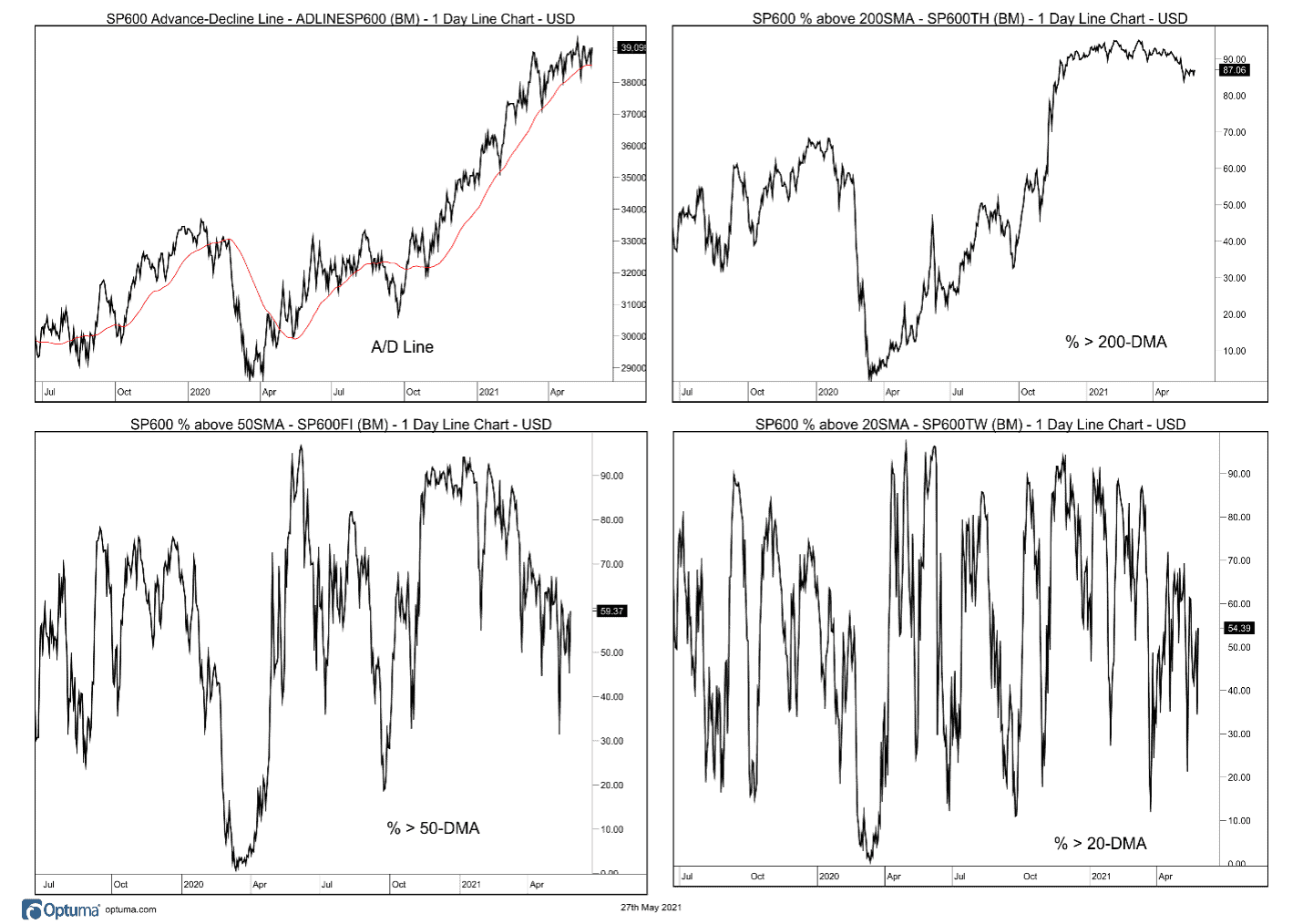
Take-Aways
Our “bent, not broken” view of breadth continues to play out. From a trend perspective, long-term metrics remain healthy/constructive. We would like to see the short-term metrics improve and regain the 60% level. Thus far, we are not seeing a buildup in new 52-week or six-month lows on the NYSE.
